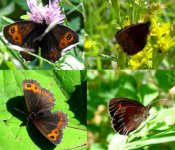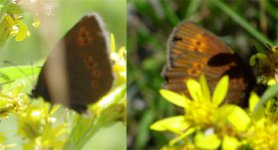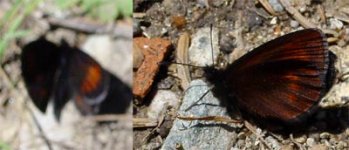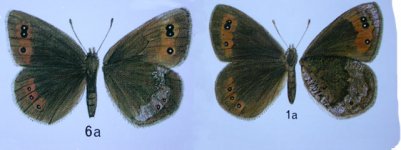Adey Baker
Member
On various holidays to different European countries over the past few years I've sometimes come across a number of chocolate brown/blackish, medium-sized Ringlet butterfly species. Some, such as Arran Brown are readily identifiable by a distinctive feature ( in that case, a white mark on the underwing, as noted in another thread). Of course, it's not always possible to see all of the features on individual butterflies [especially when one's wife is waiting (im)patiently for you!], so it's always useful if you've got the 'key' features in mind to home in on.
Has anyone been able to 'crack' the code on identifying these species? For instance, species such as Scotch Argus, plus Large, Woodland, Water, Styrian, Stygian, Autumn and Piedmont Ringlets all look nominally similar. It doesn't help that the little book that I like to carry around (Mitchell Beazley Pocket Guide) has reproduced them lighter in colour than in real life!
Below are four different individuals that I photographed on July 19th 2003 near Madonna di Campiglio in the Brenta Dolomites, Italy at about 1500 metres above sea-level. The top right one is a bit(!) blurred, but it shows one with little or no white in the centre of each spot and four spots on the hind-wing. I'm not 100% confident on the identity of any of them!
Adey
Has anyone been able to 'crack' the code on identifying these species? For instance, species such as Scotch Argus, plus Large, Woodland, Water, Styrian, Stygian, Autumn and Piedmont Ringlets all look nominally similar. It doesn't help that the little book that I like to carry around (Mitchell Beazley Pocket Guide) has reproduced them lighter in colour than in real life!
Below are four different individuals that I photographed on July 19th 2003 near Madonna di Campiglio in the Brenta Dolomites, Italy at about 1500 metres above sea-level. The top right one is a bit(!) blurred, but it shows one with little or no white in the centre of each spot and four spots on the hind-wing. I'm not 100% confident on the identity of any of them!
Adey








